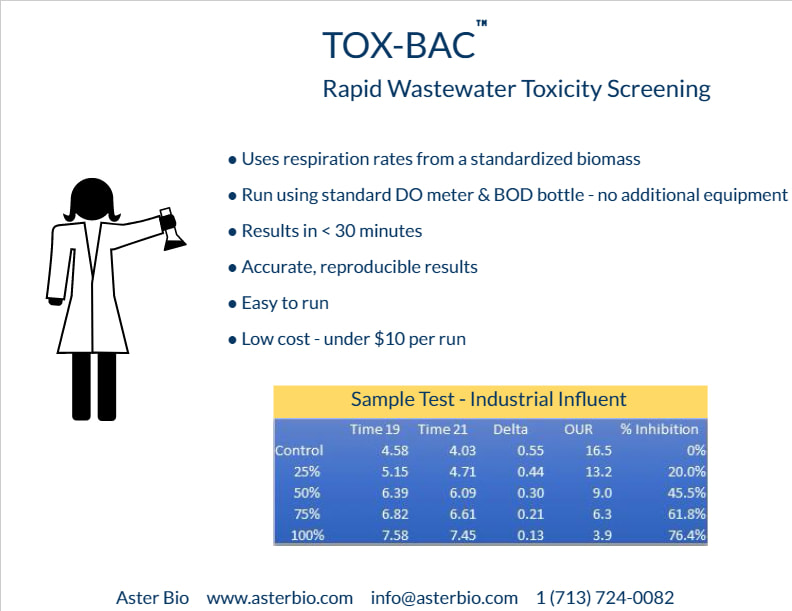Often we run the DOUR test on aeration basin water to indicate microbial respiration rate. Sudden increases indicate higher influent loadings (usually soluble organics or BOD5). We can also see similar decrease if a toxic shock that "kills" the biomass has occurred. Therefore, any sudden changes in DOUR test results should be investigated.
Using DOUR for Toxicity Evaluation
I also want to introduce the idea of using DOUR for toxicity evaluation. At Aster Bio, we use a known biomass (dried preserved microbes) in our Tox-Bac test. While the Tox-Bac known biomass is much more uniform and gives less variation in results, it is also possible to use existing biomass to evaluate wastes for biomass impact. What you do is take the stream for testing and make several dilutions. After saturating the sample dilutions with oxygen via shaking or an air stone, I add 20 - 50% by volume MLSS. Allow to aerate for 1 - 2 hours. What we are doing is spiking the DOUR with the new influent. Run the standard test protocol and determine changes in respiration rates. Use the changes from the 0% new influent bottle versus the added influent bottles to determine % inhibition. This test does not pick up chronic toxicity such as heavy metals or complex insoluble organics. It will pick up acutely toxic materials.
Another option is to use the Aster Bio Tox-Bac culture. This test with dried microbes is standardized for expected oxygen uptake in the control flask. Each vial had the same culture makeup. The vial is akin to a standard municipal WWTP biomass. Instead of having to aerate for 1 - 2 hours, the test takes less than 30 minutes per sample run. I often use this when people are having problems while telling me the influent has not changed. Often, I pick up inhibition beyond normal levels relating to some upstream activity.


 RSS Feed
RSS Feed